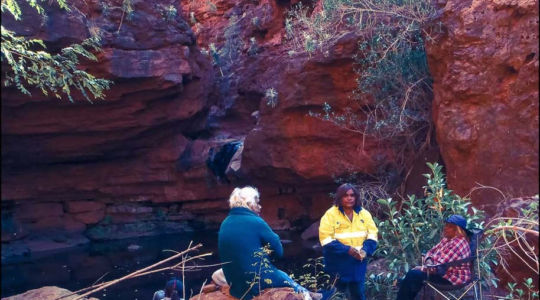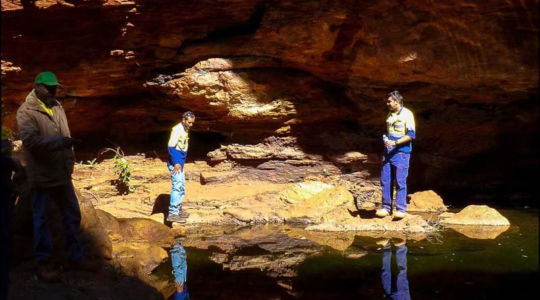About
Ganjingarri is a major thoroughfare for Aboriginal people travelling between the tablelands around the Fortescue River and northern parts of the Hamersley Range. During the Dreamtime the warlu (rainbow serpent) created this sacred spring which we call yinda. Guardian spirits watch over Ganjingarri – it is an important spiritual place with numerous archaeological sites located along the creek.
History
Ganjingarri is a sacred and culturally rich area that contains paintings of Aboriginal ancestors, various waterholes and scatters of artefacts with grinding patches that are thousands of years old. The region has always been an important pathway for Aboriginal communities travelling through the country. A significant meeting and ceremonial place, Ganjingarri has enabled regular communication between Yindjibarndi people and neighbouring groups to the south, such as the Yinnawongga and Gurruma people. Traditionally it has been a major camping area, with access to water and materials to create stone tools. In recent history Aboriginal people used the Hammersley Ranges and Ganjingarri to shelter from policemen who were rounding up and capturing Aboriginal people.
Ganjingarri Archaeology
Rock Art Panel 1
This painting is located on the northern side of the creek leading to the permanent pool, the most distinct of the engravings and paintings. It most likely represents a family of two adults and three children. The figure on the far left has their arms raised with a horizontal line across the forehead; however it doesn’t look like there are any headdresses or facial features. We believe these figures represent a family who once lived here.
Rock Art Panel 2
Located on the northern side of the creek leading to the permanent pool is a gallery of 19 paintings and an engraving. Eighteen of these motifs are geometric, while the others are anthropogenic in form. It is believed that brown and white ochre was used and many are very difficult to see due to weathering.
Forming part of the larger gallery of paintings, these motifs appear like stick figures, which seems to be the most common design across the artwork in the gully.




















